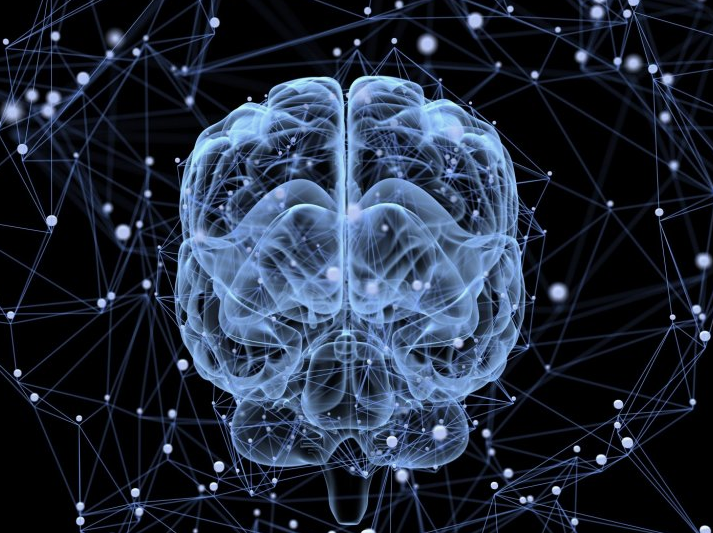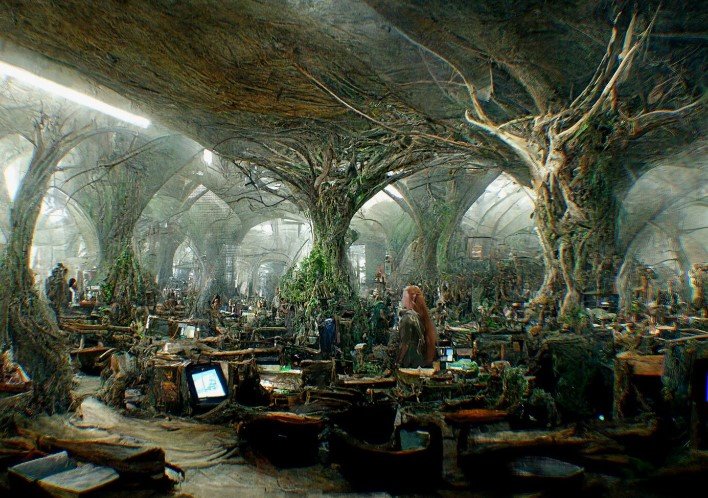Artificial Intelligence Mid Journey
Midjourney is an AI program using diffusion technology for image generation by San Francisco-based Midjourney, Inc. This generative AI creates images from text prompts, similar to DALL-E and Stable Diffusion. Based in Austin, Texas, Midjourney offers a unique and innovative approach to AI-generated art. The program has gained popularity for its ability to turn natural language descriptions into visually striking images, appealing to both artists and tech enthusiasts. With its roots in an independent research lab, Midjourney showcases the potential of artificial intelligence in the creative realm.
By harnessing the power of machine learning, Midjourney opens up new possibilities for artistic expression and digital design.
Artificial Intelligence Mid Journey

The Evolution of Artificial Intelligence- Artificial Intelligence Mid Journey
Artificial Intelligence has come a long way, and its evolution has been fascinating. In this blog post, we will delve into the mid-journey of artificial intelligence, exploring its early concepts to modern applications and its impact on various industries.
From Early Concepts To Modern Applications- Artificial Intelligence Mid Journey
Artificial Intelligence, or AI, has transitioned from its early conceptualization to modern-day applications. The journey of AI dates back to the mid-20th century, with the development of symbolic AI and the birth of neural networks. These early concepts paved the way for the emergence of machine learning and deep learning, leading to remarkable advancements in natural language processing, computer vision, and robotics. Today, AI is widely integrated into various aspects of our lives, from virtual assistants to autonomous vehicles, revolutionizing the way we interact with technology.
The Impact of AI on Various Industries
The impact of AI on various industries is profound, reshaping the landscape of business operations, healthcare, finance, and more. In healthcare, AI has facilitated medical diagnosis, drug discovery, and personalized treatment plans, enhancing patient care and outcomes. In finance, AI algorithms are used for fraud detection, risk assessment, and algorithmic trading, optimizing decision-making processes and improving financial services. Moreover, AI has revolutionized manufacturing processes, supply chain management, and customer service, streamlining operations and driving innovation across diverse industries.
Ethical and Societal Considerations
Artificial Intelligence (AI) has come a long way in its journey of development. As AI continues to advance, it is important to consider the ethical and societal implications that arise. This blog post explores the ethical and societal considerations related to AI, focusing on two key aspects: AI and privacy concerns, and addressing bias and fairness in AI.
AI and Privacy Concerns
Privacy is a fundamental right that individuals expect in their daily lives. With the increasing use of AI, privacy concerns have become more prominent. AI systems collect and analyze vast amounts of data, raising questions about how this data is used and protected. Some key privacy concerns related to AI include:
- The collection and storage of personal data
- The potential for data breaches and unauthorized access
- The use of surveillance technologies
- The lack of transparency in AI algorithms
It is important to address these concerns by implementing robust data protection measures, ensuring transparency in AI systems, and providing individuals with control over their data. Organizations should prioritize privacy by design, incorporating privacy considerations throughout the development and deployment of AI systems.
Addressing Bias and Fairness In AI
Bias in AI systems can have significant societal impacts, perpetuating existing inequalities and discrimination. It is crucial to identify and address bias to ensure fairness in AI. Some steps that can be taken to address bias and fairness in AI include:
- Collecting diverse and representative data
- Regularly auditing AI systems for bias
- Implementing fairness metrics and evaluation frameworks
- Providing explanations for AI decisions
- Involving diverse perspectives in AI development and decision-making processes
By addressing bias and ensuring fairness in AI, we can mitigate the potential harms and maximize the benefits of AI technologies for all individuals and communities.
Challenges and Limitations
Artificial Intelligence Mid Journey and Challenges and Limitations…
Technical Hurdles In AI Development
Artificial Intelligence (AI) development faces several technical challenges. One of the major hurdles is the complexity of creating AI systems that can accurately understand and interpret human language. Additionally, AI models require significant computational power and storage, which can be costly. Ensuring the privacy and security of AI systems also poses a challenge. Moreover, ethical considerations and the potential misuse of AI technology further complicate its development.
The Uncertainty of AI’s Future
The future of AI is surrounded by uncertainty. While AI has made significant strides in various fields, there are concerns about its long-term impact on employment and society. The ethical implications of AI’s decisions and actions raise questions about its reliability and accountability. Furthermore, the lack of regulatory frameworks and standardization in AI development adds to the uncertainty surrounding its future.
Ai In Everyday Life AI Image Generator
Artificial Intelligence Mid Journey and AI in Everyday Life AI Image Generator are fascinating topics that showcase the incredible advancements in AI technology. AI has become an integral part of our daily lives, impacting various industries and sectors. This article will explore two specific areas where AI is making a significant impact: healthcare and medicine, and smart cities and urban planning.
AI in Healthcare and Medicine
In the field of healthcare and medicine, AI is revolutionizing the way medical professionals diagnose and treat patients. Here are some key ways AI is being utilized:
- Medical imaging analysis: AI algorithms can analyze medical images such as X-rays, CT scans, and MRIs to detect abnormalities and assist in accurate diagnoses.
- Drug discovery: AI algorithms can analyze vast amounts of data to identify potential drug candidates and accelerate the drug discovery process.
- Virtual assistants: AI-powered virtual assistants can provide personalized healthcare advice, and reminders for medication, and monitor patient vitals remotely.
- Genomic analysis: AI can analyze genomic data to identify genetic markers for diseases and develop personalized treatment plans.
AI In Smart Cities and Urban Planning
In the realm of smart cities and urban planning, AI is transforming the way cities operate and improving the quality of life for residents. Here are some examples of AI applications in this field:
- Traffic management: AI algorithms can analyze real-time traffic data to optimize traffic flow, reduce congestion, and improve transportation efficiency.
- Energy management: AI can optimize energy consumption by analyzing data from smart grids and sensors, leading to more sustainable and efficient energy usage.
- Public safety: AI-powered surveillance systems can detect and prevent crimes, identify suspicious activities, and enhance overall public safety.
- Waste management: AI can optimize waste collection routes, predict waste generation patterns, and improve recycling initiatives in cities.
In conclusion, AI is increasingly becoming an integral part of our everyday lives, with applications ranging from healthcare and medicine to smart cities and urban planning. Its potential to revolutionize various industries and sectors is immense, offering numerous benefits and opportunities for innovation. As AI continues to advance, society must embrace these technological advancements and harness their full potential.
The Role of Regulation And Governance
Artificial Intelligence Mid Journey and The Role of Regulation and Governance…
Ensuring Responsible AI Use
Responsible AI use involves ethically deploying AI technologies to minimize potential harm and ensure fairness. Companies should prioritize transparency in their AI systems to build trust and accountability. Additionally, regular audits and monitoring are crucial to detect and address any biases or errors in AI algorithms. Training employees on ethical AI practices is essential to maintain integrity and uphold ethical standards.
International Collaboration For AI Standards
International collaboration for AI standards is vital to establish a cohesive framework for the development and implementation of AI technologies globally. By working together, countries can harmonize regulations and guidelines to ensure consistency and interoperability across borders. Sharing best practices and expertise among nations can foster innovation and drive the responsible adoption of AI. Establishing common standards will also facilitate trade and collaboration in the AI industry.
The Intersection of AI And Human Creativity
Artificial Intelligence (AI) has come a long way since its inception, and it continues to evolve at an unprecedented rate. One of the most fascinating aspects of AI is its ability to intersect with human creativity, leading to new possibilities in art, music, and even the future of work. In this blog post, we will explore the intersection of AI and human creativity, specifically focusing on AI in art and music, as well as its potential impact on the future of work.

AI In Art And Music
The use of AI in art and music has been a topic of interest for many years. AI can analyze vast amounts of data and create something entirely new from it. Here are some examples of how AI is being used in art and music:
- AI-generated music
- AI-generated art
- AI-assisted art and music creation
AI-generated music is created through algorithms that analyze various musical elements, such as pitch, tempo, and rhythm. AI-generated art, on the other hand, is created through algorithms that analyze visual elements, such as color, shape, and texture. AI-assisted art and music creation involves using AI to enhance the creative process, such as by suggesting new ideas or optimizing existing ones.
AI And The Future of Work
The use of AI in the workplace is becoming increasingly popular, with many companies using AI to automate tasks and improve efficiency. Here are some potential impacts that AI could have on the future of work:
| Impact | Description |
|---|---|
| Job automation | AI could automate many jobs, leading to job loss for some workers. |
| Job creation | AI could create new jobs in fields such as data analysis and AI development. |
| Increased efficiency | AI could improve efficiency in the workplace, allowing workers to focus on more complex tasks. |
| Skills development | Workers may need to develop new skills to keep up with the use of AI in the workplace. |
Overall, the use of AI in the workplace has the potential to greatly impact the job market and the skills required for various positions. Workers need to continue to develop their skills and stay up-to-date with the latest technology to remain competitive in the job market.
The Next Frontier: Advancements In AI Research
Artificial Intelligence (AI) has come a long way since its inception, and its mid-journey is marked by incredible advancements in research and technology. The next frontier of AI is set to revolutionize the way we live and work, with breakthroughs in algorithms and the exploration of the potential of quantum AI. In this blog post, we’ll delve deeper into these two areas and see how they’re shaping the future of AI.
Breakthroughs In AI Algorithms
AI algorithms are the backbone of AI technology, and they’re constantly evolving to become more efficient and powerful. In recent years, we’ve seen some significant breakthroughs in this area:
- Generative Pre-trained Transformer 3 (GPT-3) is one of the most powerful language models to date, with 175 billion parameters that can generate human-like responses to prompts.
- Reinforcement learning algorithms have been used to train AI agents to play complex games like Go, Chess, and Dota 2.
- Convolutional Neural Networks (CNNs) have been used to develop AI models that can recognize and classify images with incredible accuracy.
These breakthroughs are just the beginning, and we can expect to see even more advancements in AI algorithms in the coming years.
Exploring The Potential of Quantum AI
Quantum AI is a new field of research that’s still in its early stages, but it has the potential to revolutionize the way we think about AI. Quantum computers are fundamentally different from classical computers, and they can perform certain computations much faster than any classical computer can.
| Classical Computers | Quantum Computers |
|---|---|
| Process information as bits (0s and 1s) | Process information as qubits (can represent multiple states simultaneously) |
| Perform one calculation at a time | Perform multiple calculations at the same time |
| Can be simulated on classical computers | Cannot be simulated on classical computers |
Quantum AI has the potential to speed up computations for complex problems like natural language processing, optimization, and pattern recognition. It could also lead to the development of new AI models that are more powerful than anything we’ve seen before.
Looking Ahead: AI’s Impact on Society and The Economy
Artificial Intelligence Mid Journey and Looking Ahead: AI’s Impact on Society and the Economy…
Preparing For AI-driven Disruptions
As the progression of artificial intelligence (AI) continues, it is essential to anticipate and prepare for the potential disruptions it may bring to various industries. One significant aspect is the potential impact on employment, as AI automation could replace certain job functions. Organizations must strategize and invest in retraining and upskilling their workforce to align with the demands of an AI-driven economy. Additionally, there is a need for regulatory frameworks to mitigate the negative repercussions and promote a smooth transition.

The Ethical And Economic Implications of AI
The integration of AI into society raises profound ethical considerations regarding data privacy, decision-making transparency, and algorithmic bias. It is crucial to address these concerns through ethical guidelines and robust governance to ensure AI systems operate responsibly. Furthermore, the economic implications of AI encompass both opportunities and challenges. AI has the potential to boost productivity and innovation but may also exacerbate economic inequality. Policymakers and businesses need to collaborate on sustainable strategies that harness the benefits of AI while mitigating potential adverse effects.
Conclusion
Embark on your AI journey with Midjourney, the innovative image generator powered by cutting-edge AI technology. Discover the endless possibilities of creating unique visuals effortlessly. Unleash your creativity and explore the realm of AI-generated art with Midjourney. Start your creative exploration today.




